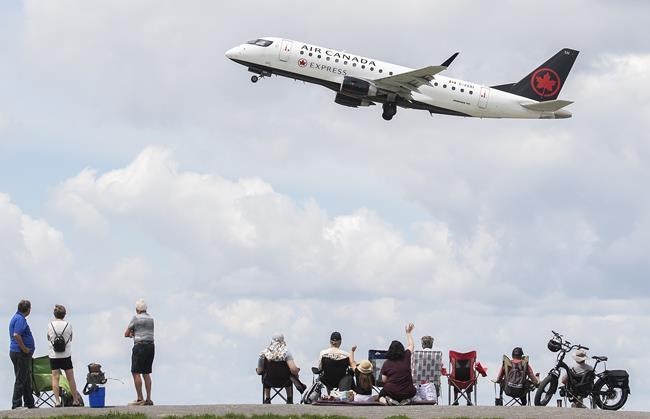OTTAWA — The national spy watchdog says Canada's border agency needs to do a better job of documenting how and why it singles out certain air passengers for possible additional scrutiny.
The Canada Border Services Agency's targeting program uses pre-arrival risk assessments to identify inbound air travellers more likely to be ineligible to enter Canada.
As a first step, the border agency looks at information about passengers routinely provided by commercial air carriers, including age, sex and national or ethnic origin.
The National Security and Intelligence Review Agency found the border agency relies on information and intelligence from a variety of sources to determine which data elements to treat as indicators of risk.
A report from the intelligence watchdog released late Thursday says the border agency has the legal authority to conduct such air passenger targeting.
However, it details shortcomings in the border agency's documentation of its program activities that made it difficult to ensure all decisions complied with legal and regulatory restrictions.
"These weaknesses also impede the CBSA's own ability to provide effective internal oversight," the report says.
In 2019-20, the border agency used the information from airlines to risk assess 33.9 million arriving international travellers.
"Brief interruptions to passengers' liberty and freedom of movement are reasonable, given the state's legitimate interest in screening travellers and regulating entry," the report says.
However, it adds that the border agency's activities "must not be discriminatory," given the obligations set out in the Canadian Human Rights Act and the Charter of Rights and Freedoms.
The absence of adequate justification in several instances for the border agency's reliance on indicators created from passenger data leads to a "risk of discrimination," the report says.
Ensuring that targeting practices "are substantiated by relevant, reliable and documented information and intelligence is important to demonstrating that travellers' equality rights are being respected," it says.
The intelligence review agency recommends a number of measures to improve record-keeping and identify and lessen the possibility of discrimination. In accompanying responses, the border agency agrees with the various recommendations.
The review, which covered November 2020 to September 2021, focused on the border agency's triaging activities in air passenger targeting relevant to potential national security-related threats. But it also looked at elements related to illicit migration and contraband smuggling.
The border agency has two methods to triage passengers using passenger data — flight list targeting and scenario-based targeting.
Flight list targeting is a manual triage method that involves first selecting an inbound flight considered to be at "higher risk" of carrying passengers that might be violating the law. Targeting officers then choose passengers on those flights for further scrutiny based on details about them.
Scenario-based targeting is an automated triage method that relies on pre-established sets of indicators, created from passenger data, that the border agency considers risk factors for a specific enforcement issue.
The data for passengers on all inbound flights are automatically compared against the parameters of each scenario, the report says. Any passengers whose data match all of the parameters of one or more scenario are automatically selected for further assessment.
Concerning the border agency's automated scenario-based targeting method, the review agency found the use of passenger data to identify potential threats and contraventions of the law complied with statutory restrictions.
As for the border agency's manual flight list targeting method, the review agency was unable to assess the reasons for selection of individual travellers and was therefore not able to verify compliance with the Customs Act.
For both methods, the review agency was also unable to verify that all triaging complied with the regulatory restrictions on the border agency's use of passenger data, "namely that its use served to identify potential involvement in terrorism offences or serious transnational crimes."
This was due to a lack of precision in scenario-based targeting program documentation and a lack of information about the basis for flight list targeting triaging decisions, the report says.
This report by The Canadian Press was first published Nov. 30, 2023.
Jim Bronskill, The Canadian Press



